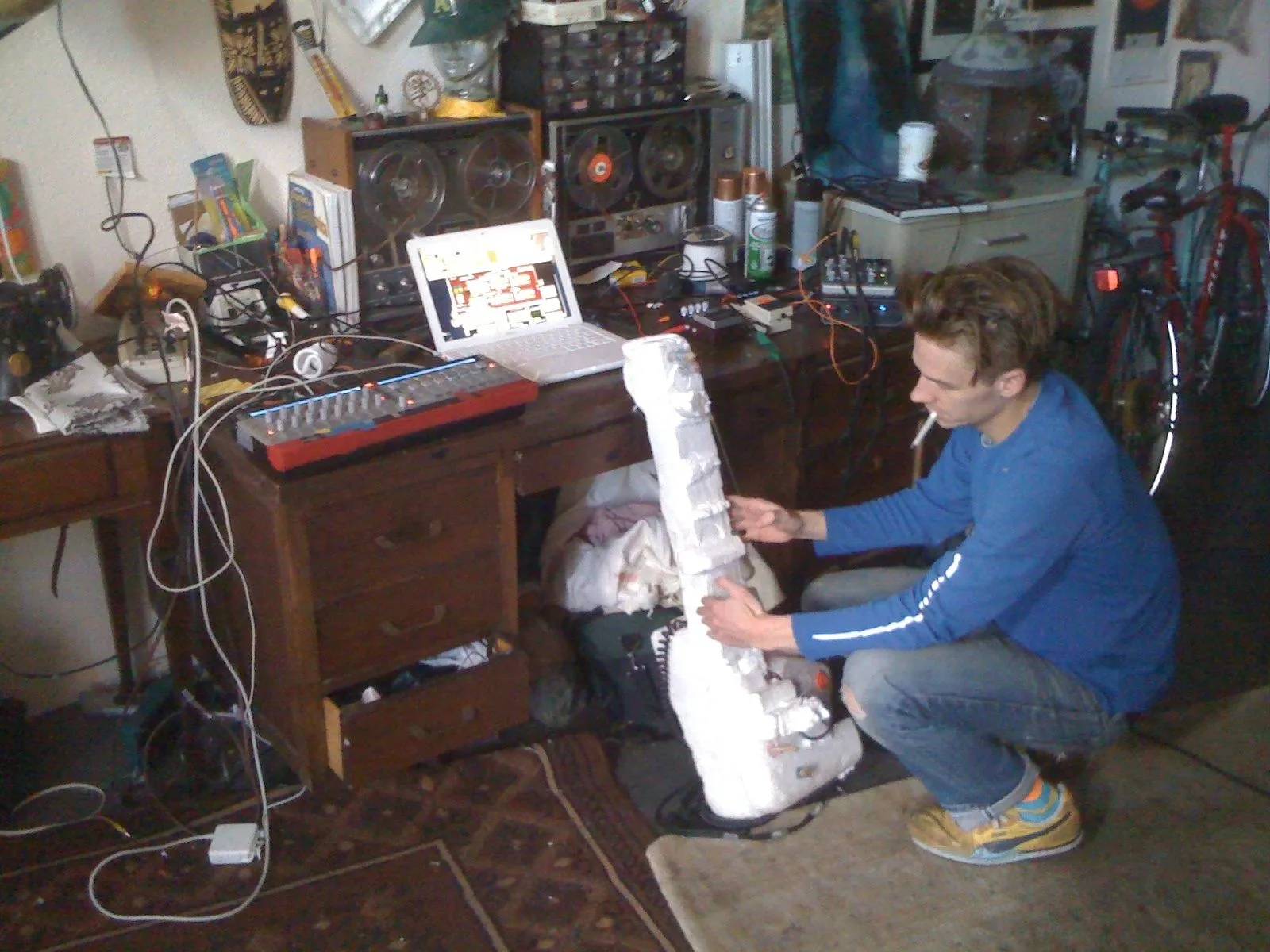
Jsun McCarty (RIP) playing one of his styrofoam instruments c. 2011
This is a short appreciation post for “cheap tools” and how they help me get started making art.
By “cheap” I’m meaning that they are cost-effective, often almost thought of as disposable, and easy to make again and again with them without exhausting the item or oneself. Pour over coffee makers, long arm staplers, thumb tacks, magnets, double edge safety razors, rulers… Almost all of these can be found in many places, purchased new or many times used, borrowed from friends or found at work.
I started running again this year and purchased some simple t-shirts and a basic wristwatch. With the wristwatch I don’t have to bring my phone when I go jogging. When I hurt my palms on the gym bars I purchased cheap gloves to protect them when I exercise.
These are a few examples of cheap tools. But cheap tools are also pocket notebooks, pens and index cards, push pins, and pads of recycled newsprint. In my studio I tack up large sheets of paper or use a pad for idea mapping. I make to-do lists so I can check things off, or sketch out prototypes.
Further kinds of cheap tools I’m thinking about: an old pocket automatic digital camera I purchased at a swap meet/Flohmarkt here in in Berlin recently. It’s a Powershot camera from 12 years ago or so. It has a SD card to store images, and some built-in filters including black and white and ‘toy camera’ mode that emulates vignetted corners and color shift.
A couple years ago I picked up a microcassette recorder at a Flohmarkt, and when it was inadvertently damaged I later picked up another on ebay. The camera and recorder let me quickly take photos or field recordings. Their forms and built-in functions are quick to use, provide some constraints for the output, and are so easy to get started using. While these are not thought of as tools for making fine art and not professional equipment, I am considering them in the realm of the snapshot cameras celebrated in the 70s to early 2000s, people like Garry Winogrand, Nan Goldin, Wolfgang Tillmans, Martin Parr. I may not be a William Eggleston or Alec Soth or Zoe Strauss but I can try, and my work can also be pleasing.
To extend the idea of cheap tools from hardware to software I’m thinking of cheap tools on the computer for making. Consider Pico-8, the tiny game maker, or p5.js web editor for creative coding. They are capable of being used in many approaches and styles, but they provide a basic foundation to get started without needing anything else.
To be clear the phone can be a cheap tool too, but it’s usually not. It’s an uber swiss army knife. The fact that it’s a computer with millions of apps available along with the distraction and surveillance usually baked in mean that it’s a complex tool. That can be fine and I use it for ideas, and even for making art at times. But it’s good to ban the thing from use sometimes too.
Many people beginning or long working in coding know the satisfaction from creating simple tools. Especially in something like the command line or pico-8, these tools, like Pomodoro clocks, simple gallery pages, minimal weather forecasts and the like become easy and comforting to use like simply designed furniture. I am starting to blur the distinction between cheap and simple, but my intention is to think about small command line software and the like as cheap. So cheap that it can be added to or digitally thrown away, shared with others, or combined with other little tools. Little languages can be cheap tools as well maybe. Anything that lets you get on with your day and create, improvising as you go, testing but with the potential of turning into your ‘work’ can be a liberating cheap tool.
Commonly I am interested in looking to the tools still around left over from the recent or ancient past. So many of these can be found cheaply and used to make our art. Young people have been drawn to these tools as well, and it’s no surprise that in a world of surveilling searches, AI LLMs and the like that a return to simple and leftover cheap can provide new creative challenge and inspiration.